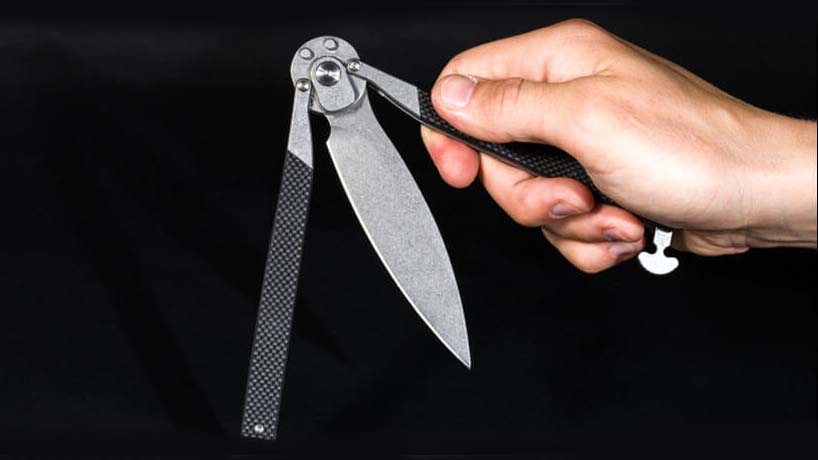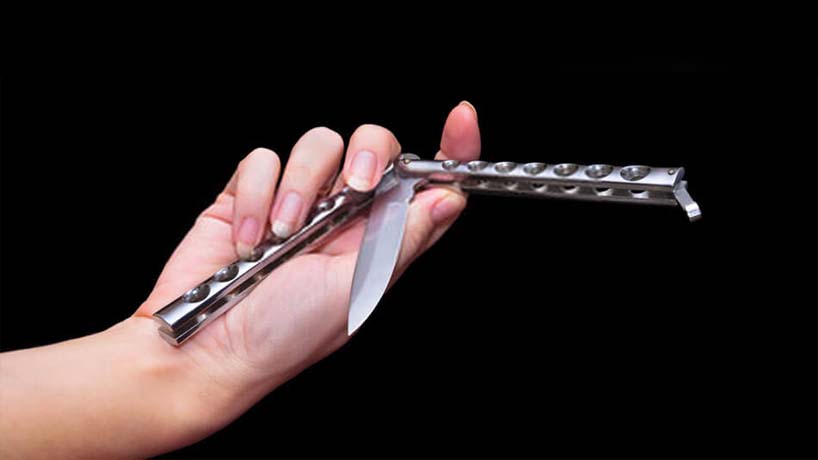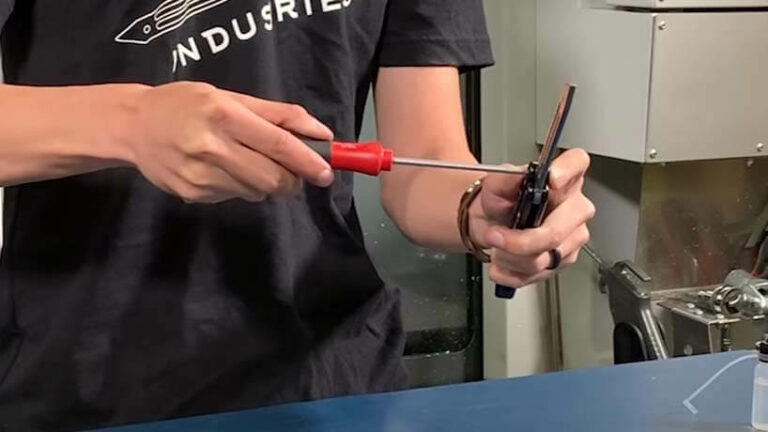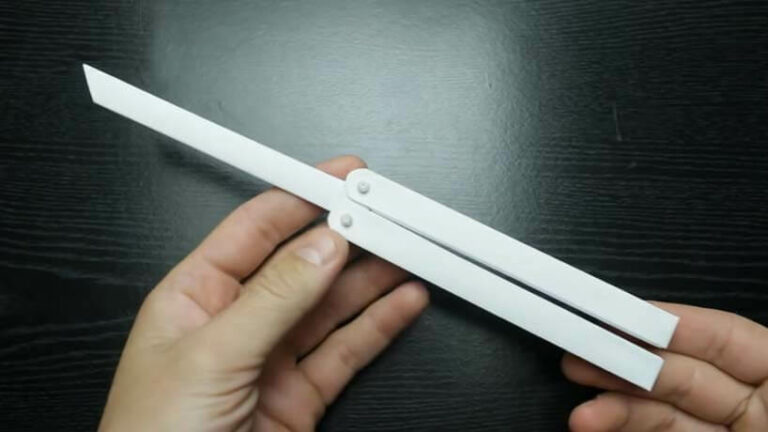If you’ve ever seen them in action before, you’ll know how mesmerizing these spinning wonders can be. When they’re wielded by skilled hands they seem to float and glide through the air. The good news is that with the right techniques and a little patience, you can learn how to use a butterfly knife just as efficiently.
Whether you’re looking for a fun hobby, or you’re fixated on the skill, you’ll find simple and easy to follow tips, tricks, and techniques to get you started right. You’ll be guided through safety, handling, maintenance, and some beginner-friendly tricks that are easy to learn. So whip your butterfly knife out and let’s jump in!
How to Use a Butterfly Knife Properly

Butterfly (aka. Balisong) has been around for quite a bit. While they can be incredibly fun and flashy for tricks and artistic expression, they can be devastatingly dangerous. Recall the first time you held a butterfly knife in your hands after watching a skilled set of hands handle it. You think it’s easy until you holding it without the foggiest clue what to do.
Perhaps the biggest challenge facing any new Balisong owner is learning how to use a butterfly knife safely. You can move onto the flashier tricks without mastering the basic mechanics of the knife. The first thing you need to do is standardize the way you hold the knife. If you’re right-handed start with the knife facing up so that the cutting edge of the blade is facing to the left.
This will protect you from accidentally flipping the blade open onto your finger. It’s also the starting point that many beginner tricks begin at. Never try to go too fast with a Balisong. Always take your time to build up the muscle memory needed to get through the tricks seamlessly.
Treat the knife as though it’s dangerous and might cut you or hurt somebody around you. With that kind of respect moving forward, you’re not going to be foolishly launching the knife into the air to impress your friends. With that all said, let’s move onto the fun part!
Butterfly Knife Tricks for Beginners
As we touched on earlier, although these butterfly knives are potentially deadly, they’re incredibly fun and rewarding to master. Here you’ll find some of the foundational beginner tricks for opening and closing a butterfly knife. Let’s take a look.
Butterfly Knife Tricks for Beginners – The Basic Open Trick
The first thing to take note of is which handle is the safe handle. This is the handle on the unsharpened side of the blade (it’s also the handle without the latch coming out its base). Hold the knife in your right hand so that the safe handle is on the right side. Use your thumb to hold the safe handle securely, but not overly tight.
Tilt your wrist to the left and flick it back to swing the other handle and the balisong’s blade over the back of your hand (on the finger-side of your knuckles). You should see the blade pointing straight forward and the other handle dangling over the back of your hand. Now, rotate the knife in your hand.
Flick your wrist to flip the non-safe handle over your hand. It should now be making contact with the blade again. The unsharpened side of the blade will be resting against the back of your finger/hand now. Now you’re going to need to flip the non-safe handle back into your hand.
Move your thumb out of its path as you flick your wrist again. As the non-safe handle lands, use your thumb to secure it again. You can also do this opening trick horizontally. Just start from a hand position that’s 90° from the first one.
Quick Tip
Bear in mind that this is going to take quite a bit of time to get right. So break it down slowly into the steps above and practice your way through each of them. Build up muscle memory before trying to increase the trick’s speed. To close the butterfly knife, start by holding the safe handle. Flip the knife over the back of your hand (non-safe handle and the blade).
Rotate the knife 180° by twisting the safe handle. As it reaches the full rotation, flip the handle over your hand again. The blade will be pointing straight out and away from your hand, and the other handle will be dangling over the back of your hand. Move your thumb out of the closing motion’s way as you flip the non-safe handle and blade back into their closed positions.
There you go! This is probably the most important trick to learn. Despite being quite foundational, it looks and feels impressive once you’ve built up a little speed. Don’t go too fast too soon, especially if you haven’t built up the necessary muscle memory. Practice each step – one at a time – and piece them together gradually.
Tips to Use a Butterfly Knife Better

There are a couple of tips you should be mindful of when you’re working on your technique or handling the knife. The first is to make sure you don’t keep the blade too sharp if you’re just starting. You need to build up the muscle memory before you risk your fingers. Having an ultra-sharp knife is impressive, but missing large portions of your fingers probably aren’t.
Spend some time with an unsharpened Balisong, or wear protective gloves. The next tip is to always start the opening and closing motion by holding the safe handle. Remember that the other handle houses the cutting edge of the blade. Regardless of the trick or motion, you’re learning, no part of your hand should ever be on the inside of that handle.
One mistake or accidental bump and the exceptionally sharp blade can close into your hand. Don’t try to learn any throwing and catching tricks until you’re extremely comfortable with a variety of in-hand tricks. It’ll usually be a couple of months/weeks until you’re ready to take on very advanced tricks and movements.
Finally, you should consider partnering up with other butterfly knife enthusiasts. You’ll learn some things you didn’t before and can feed off their experience and enthusiast. Just don’t attempt tricks that are a little too far above your current skill level.
What are the Uses of a Butterfly Knife?
Butterfly knives stepped into their more dangerous role as they were widely adopted by young members in gangs. This quickly led to them being used for violence or self-defense. These knives are incredibly sharp and capable of inflicting some serious harm when they’re used maliciously. They’re illegal in many countries and can’t be used as an EDC knife in most US states.
Nowadays, Balisong knives are used for self-defense and competitively. These competitions are usually carefully regulate and focus on the tricks and “art” related to butterfly knives. You’ll find them in many collections and with unique and stunning designs. These collector’s knives aren’t used practically and are mainly there to showcase skilled craftsmanship.
How to Maintain and Care for a Butterfly Knife
Let’s take a look at how to clean a butterfly knife first. You’ll need some rubbing alcohol, a toothbrush, some paper towels, and a drying cloth (preferably microfiber). The toothbrush needs pretty sturdy bristles. It’s used to reach into the grooves and hard to reach spots to get the dirt out.
Dab some rubbing alcohol onto the paper towels or a clean cloth. Wipe down the handle and blade a couple of times. This should remove most of the visible dirt. You can fold the paper towel/cloth up and run it through the channels along the sides of the handle.
Drip some rubbing alcohol onto the toothbrush. Use the bristles to work in any holes and spots that the cloths couldn’t reach. Be careful not to let any of the bristles break off in the blade’s hinges. Run the knife underwater in your sink to get all the rubbing alcohol off.
Give it a quick wipe down with the drying cloth and let it air-dry. Make sure you don’t put the knife into a sheath or storage box while it’s still wet. This is a surefire way to rust your Balisong. In terms of maintenance, you don’t need to sharpen this knife very often – especially if you’re using it for tricks.
If you’re using it for defense, you’ll only need to touch up the blade once a month or so. Always keep the knife dry and don’t leave them on any metal surfaces while damp. You should get a case or sheath to keep the knife between uses.
Final Thoughts
Well done for taking the time to get informe! You’re on the right path and should have a clear idea of what your next steps are. Remember to take your time and gradually build up your muscle memory. Be mindful of how you treat the knife – try to get a decent care routine in place.
All that’s left now is for you to take what you’ve learned on how to use a butterfly knife and get some practice. Stay patient and consistent and you’ll be well on your way to dropping jaws with your impressive tricks – good luck and stay safe!





